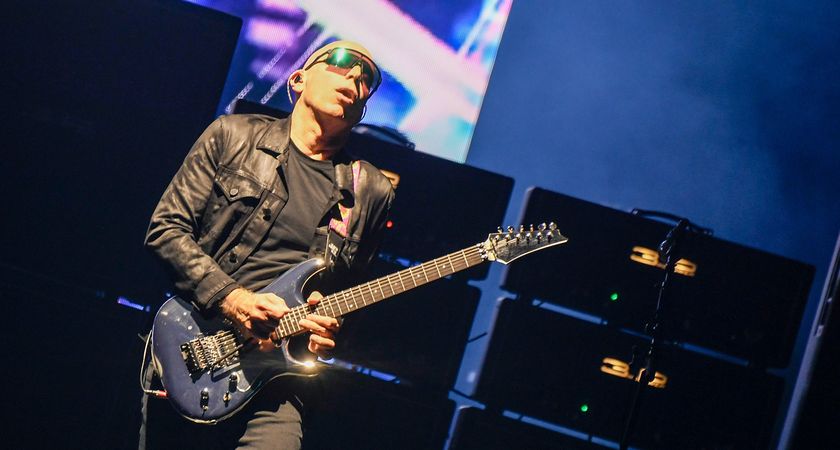Just Because It’s Broken Doesn’t Mean You Should Fix It

Sometimes busted really just means working in a way you didn’t expect. And that can be a good thing.
Take Trigger, country musician Willie Nelson’s famous six-string sidekick.
His 1969 Martin N-20 classical guitar may look like baby possums have been teething on it under his porch all summer, but it’s clearly got a tone and look that has served him faithfully for decades.
I realize a guitar can be well and truly unplayable. Unless you’re auditioning for a Pete Townshend biopic, a Les Paul with a broken headstock doesn’t do you any favors. But sometimes, even what seems a problem can be turned into an advantage.
Years ago I bought a guitar with really high action. A luthier reset the neck, but the problem returned within a year. Luckily, I was into early acoustic blues at the time.
Just as the guitar was becoming too hard to fret, it was simultaneously becoming easier to play slide on. Instead of getting mad at not being able to fret the guitar anymore (OK, I was kinda pissed), I switched to playing bottleneck on it. In the end I was happy to have a really good slide guitar, and it didn’t end up as a wall-hanger for someone on Craigslist.
With electric guitars, dodgy circuits can create their own set of issues, ranging from tone capacitors that have drifted out of norm to controls and pickups that act in unexpected ways.
Get The Pick Newsletter
All the latest guitar news, interviews, lessons, reviews, deals and more, direct to your inbox!
The Peter Green/Gary Moore 1959 Les Paul is perhaps the most famous example of bad pickups gone good. This is the guitar Green bought when he replaced Eric Clapton in John Mayall’s Bluesbreakers, and which he later sold to blues great Gary Moore. Its tone is unique, and hence has been sought after for decades.
I’ve seen different accounts from experts with first-hand information about this guitar. But what they agree on is this: Whether at the Gibson factory or due to a funky repair job after Green bought the guitar, the neck pickup was installed backwards, with the adjustable pole pieces pointing toward the bridge instead of the neck and the magnet the wrong way around, reversing the pickup’s polarity.
Compared to Gibson’s standard pickup configuration, Green had a broken guitar. But it was broken in the most magical way, creating a Les Paul with a Strat-like out-of-phase tone in the middle position.
I’ve encountered a similar phenomenon myself.
In 2000 I bought a 1952 Telecaster from Elderly Instruments. Although it played fine, the front pickup sounded … different. The tone reminded me of an acoustic guitar: big, warm and very woody, but with the long sustain of a solidbody electric. It definitely didn’t sound like my ’52 reissue or even other vintage blackguards I’d played before. If Green’s Les Paul had a Strat influence, my Telecaster had a Martin side to it.
Because I was fixated on the fact that it didn’t sound like a typical old Tele, off it went to a repairman. He tried everything, changing caps and rewiring the controls. He told me that instead of reading around 6,000 to 7,000 ohms, the front pickup read 1,000,000 ohms, a sure indication of an internal short somewhere in the windings.
Yet it still worked, and more importantly, it did so with a sound I’d not heard in an electric guitar before.
Now at this point he could have done a rewind or replaced the pickup. But the more I played it the more I realized the sound was both versatile and unique, and it quickly became my sound, quirks and all. It was a matter of moving outside of what I’d expected a Tele to sound like, to stop asking myself, “How do I get it to sound like a ’52 Tele?” and to ask a more important question instead: “How do I like the sound it makes?”
That made it clear, and I’ve kept the Tele as is ever since.
Great music is made by people moving beyond the normal expectations. Your guitar offers a lot of possibilities. Not all of them may happen on purpose, or look or sound “normal.” But hey, that’s rock and roll. Embrace it.
It’s not broken if it works for you.
William Baeck is a writer, photographer and hack guitarist living in London. You can check out his webpage at williambaeck.com and reach him on Facebook and Twitter.

"Upgrading from your entry-level acoustic opens the door to an entirely new world of tonewoods, body shapes, and brands": 6 signs it's time to upgrade from your first acoustic guitar

"I'm past my prime": 5 common excuses for not learning the guitar – and 5 body and mind-boosting reasons you should










